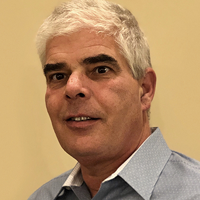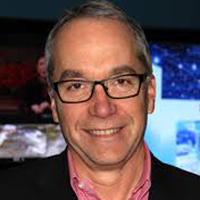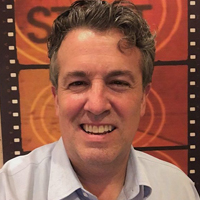NTF 2020 | Broadcasters Hold Firm On Remote Workflows
As the television industry heads into its second winter of contending with the COVID-19 pandemic, local broadcasters have refined their remote production workflows. And they plan to maintain the status quo for the foreseeable future, as IP connectivity and remote access and collaboration tools are allowing them to maintain their daily news product.
But with the first vaccine now in distribution, they are also looking forward to the day they can return staffers to the high-energy world of the newsroom, said top engineers at TVNewsCheck’s NewsTECHForum last week.

Tom Casey
“We want to put people back in newsrooms and take advantage of the synergies there,” said Tom Casey, VP of technology for Meredith Local Media Group. “There’s nothing better than watching a great team in the newsroom when a good story breaks out, and the energy that happens and the reaction and the product that comes out of it. I don’t think you can replicate that in a teleconference.”
Today only 10%-15% of Meredith’s staffers are working in the building, and that has been pretty constant since last March, said Casey, who joined the panel session, Remote Production: From Exception to Option, moderated by this reporter. He said the group had slowly started bringing people back to stations this summer, but quickly reversed course as COVID case counts started to increase nationwide.
“It became really evident that wasn’t the right place to go,” Casey said. “So we’re back right about where we were at beginning of the pandemic.”
E.W. Scripps has maintained the same skeletal staff at its stations since late February and early March. While an average Scripps station holds about 150 people, only nine or 10 are working in the building per shift, including news employees, a media maintenance person and anchors, said E.W. Scripps CTO Ray Thurber.

Ray Thurber
Scripps management is not only worried about the health of its employees but also is sensitive to child-care and elder-care issues. And Thurber noted that even if employees don’t get sick themselves, quarantines in and of themselves are a threat to business continuity. So Scripps is holding pat for now while being hopeful about the vaccine.
“As far as the next two years, we want to get back together,” Thurber said. “I love working in a newsroom, and I think most people who work with Scripps do, too. The adrenaline that goes through a newsroom is hard to duplicate at home.”

Eric Neel
Hubbard Broadcasting stations have about 30% of staffers on site, as they don’t employ as much automation as other groups and some of their live production systems still require a human operator at the controls, said Eric Neel, the company’s director of IT infrastructure and security. That number has stayed fairly steady since last March.
All three broadcasters said their groups have made heavy use of bonded cellular systems to contribute live feeds from anchors’ homes as well as remote access tools that allow staffers to access on-premise hardware at the station.
Collaboration tools like Zoom videoconferencing and the Slack messaging platform, along with broadcast tools like IP intercom systems, have kept communications channels open among scattered staffers. And Scripps is currently developing its own assignment tool that would represent the “one voice of truth” from a story’s birth and update critical newsroom systems along the way.
Craig Wilson, product evangelist, broadcast and media enterprise marketing solutions at Avid, said his company has seen customers taking new advantage of remote access workflows that have existed for some time in its iNews and MediaCentral newsroom systems.
“There has been a huge shift of enabling remote access to systems that are on-premise in the studio facility,” Wilson said.

Craig Wilson
While those new workflows have been successful, working in distributed teams still presents a creative challenge, he said, as it is difficult to “recreate that sense of community you have in a newsroom where you’re working together toward a common goal.” But Wilson added there are also some advantages to the current workflows that may carry over for the long term — one customer he spoke with recently noted that having daily editorial meetings over Zoom instead of in person would allow staffers to stay home for another hour in the morning.
“So perhaps more work/life balance,” Wilson said. “Things like that customers may continue to want to take advantage of, even as we go through next year and things get more normal.”
With cold weather now gripping much of the country, groups have also developed solutions for providing some physical comfort through the winter months while still maintaining social distancing. Scripps’ stations in Detroit and Indianapolis have set up large tents with dedicated heaters inside their stations’ garages to provide field crews with a cozy place to edit. And both it and Meredith are dusting off old satellite trucks and production units and setting them up with internet access outside of stations to serve as safe workspaces, with thorough cleanings between individual users.
Now that remote workflows have stabilized, broadcasters are also working to ensure the safety of their corporate IT networks. Neel said that in the early days of the pandemic some personnel adopted various remote access tools out of expediency that didn’t necessarily meet all of Hubbard’s security requirements. Casey said Meredith had a similar experience. Both groups have now moved to plug the holes.
“On paper at 50,000 feet, everything looks pretty rosy in our organization from a policy standpoint, it’s been VPN, VPN, VPN, pre- and post-pandemic here,” Neel said. “But the reality of things is that as people have been making ends meet, they have been adopting solutions that have skirted policy. Instead of breaking things, we’re working with them to address the problem and pull them back inside of best practices.”
Read more NewsTECHForum 2020 coverage here.
































Comments (0)